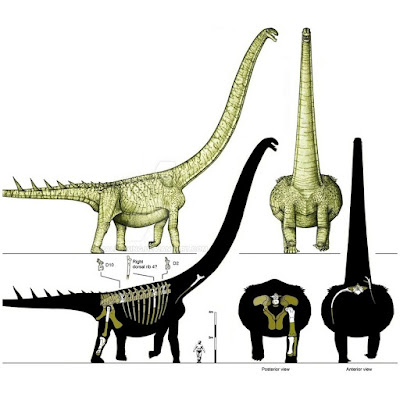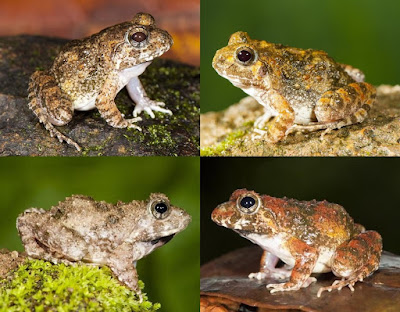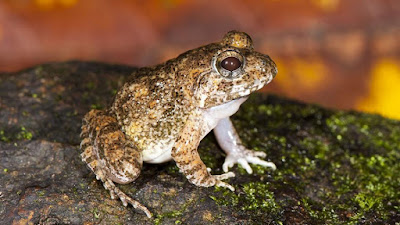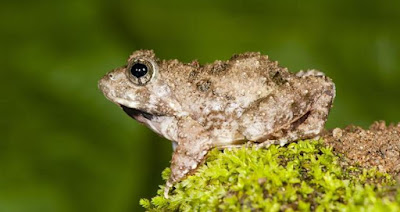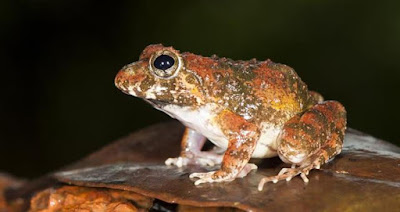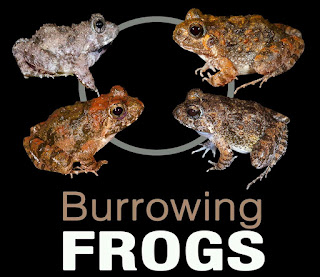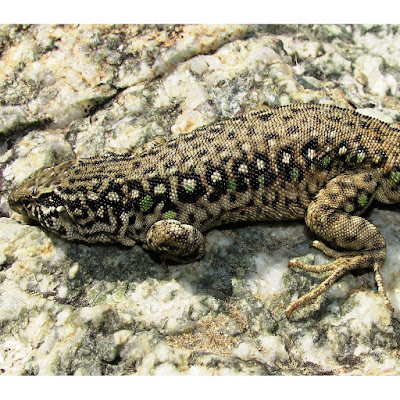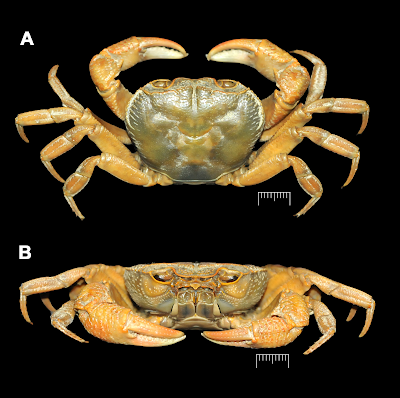[Most Recent Entries] [Calendar View]
Friday, June 23rd, 2017
| Time | Event | ||||
| 1:29a | [Paleontology • 2017] The Chinese Colossus: An Evaluation of the Phylogeny of Ruyangosaurus giganteus and Its Implications for Titanosaur Evolution Abstract For many years the precise taxonomy of Titanosauria has been a puzzle, and even today only certain segments of this vast clade are well-understood. The phylogenetic positions of many titanosaurs are murky, though specimens often still await rigorous analysis. One of the largest examples is the massive Chinese titanosaur Ruyangosaurus giganteus – though largely incomplete, the holotype is distinct enough to indicate strong phylogenetic affinities with a specific subgroup of titanosaurs. A review of previous literature on Ruyangosaurus, referred tentatively to Andesauridae, shows that this classification is based on three weak, non-diagnostic characters. Ruyangosaurus differs from taxa traditionally included in Andesauridae in at least 20 characters of the torso, femur, and tibia. Several plesiomorphies of Ruyangosaurus are extremely rare in titanosauria except for the clade Lognkosauria and its close relatives. The vertebra initially described as a posterior cervical is most likely an anterior dorsal, with a strong resemblance to that of Puertasaurus. The posterior dorsal of Ruyangosaurus shares synapomorphies with Mendozasaurus and Dreadnoughtus. The femur clusters close to the femora of Malawisaurus, Traukutitan, and Pitekunsaurus. Ruyangosaurus is here recovered as a lognkosaurian, with significant implications for the distribution and evolution of that group and the paleobiology of Mid-Cretaceous China. CONCLUSION: Ruyangosaurus giganteus represents a new and unusual radiation of Lognkosauria in Asia in the early part of the Late cretaceous period, coinciding with a time of Africa’s final separation from South America and gradual collision with Asia. Its unique morphology implies a close relationship to Puertasaurus, and it is possible it may form a subclade within Lognkosauria with Notocolossus, Pitekunsaurus, and Puertasaurus, with Mendozasaurus, Dreadnoughtus and Futalognkosaurus forming another sub-clade. However, Ruyangosaurus differs from all other lognkosaurs and the rest of titanosauria in having neural fossae separated from the neural canal by laminae, in having a strange quartet of nearly flat “spider laminae” on the posterior neural arch of the posterior dorsal, and in having the intraprezygapophyseal lamina located far higher on the neural arch in the anterior dorsal. As there is a paucity of Ruyangosaurus material,diagnosis of many features is not possible, though it shows a particularly strong affinity with Puertasaurus in anterior dorsal morphology and with Lognkosauria and Lithostrotia in general asit lacks defined hypantra and hyposphenes. Based on the dorsal material, the Ruyangosaurus holotype is a very large sauropod, exceeding Futalognkosaurus and Dreadnoughtus in size.Based on the dimensions of the anterior dorsal, it likely also exceeded Notocolossus, though wasprobably smaller than Puertasaurus and the recently discovered titanosaur species in the MPEF collections still awaiting description. This newly excavated taxon from Argentina’s Chubut province is known from multiple specimens in an excellent state of preservation, which appearstrongly lognkosaurian in morphology, among which the largest femur appears to be roughly 2.6 m in length Nima Sassani and Gunnar Tyler Bivens. 2017. The Chinese Colossus: An Evaluation of the Phylogeny of Ruyangosaurus giganteus and Its Implications for Titanosaur Evolution. PeerJ Preprints. 5:e2988v1. DOI: 10.7287/peerj.preprints.2988v1 Lü J, Xu L, Jia S, Zhang X, Zhang J, Yang L, You H and Ji Q. 2009. A New Gigantic Sauropod Dinosaur from the Cretaceous of Ruyang, Henan, China. Geological Bulletin of China. 28(1); 1-10. Ruyangosaurus giganteus (Lü et al., 2009) ... Art by Zhao Chuang | ||||
| 2:05a | [Herpetology • 2017] Description of Four New Species of Burrowing Frogs in the Fejervarya rufescens complex (Dicroglossidae) with Notes on Morphological Affinities of Fejervarya Species in the Western Ghats
Abstract The Rufescent Burrowing Frog, Fejervarya rufescens, is thought to have a wide distribution across the Western Ghats in Peninsular India. This locally abundant but secretive species has a short breeding period, making it a challenging subject for field studies. We sampled 16 populations of frogs morphologically similar to F. rufescens in order to understand the variation among populations found across the Western Ghats. Our study shows significant morphological and genetic differences among the sampled populations, suggesting that F. ‘rufescens’ is a complex of several undescribed species. Using evidence from morphology and genetics, we confirm the presence of five distinct species in this group and formally describe four as new. The new species were delineated using a phylogeny based on three mitochondrial genes (16S, COI and Cytb) and a haplotype network of a nuclear gene (Rag1). Hereafter, the distribution of F. rufescens is restricted to the state of Karnataka and adjoining regions of northern Kerala. Three new species (Fejervarya kadar sp. nov., Fejervarya manoharani sp. nov. and Fejervarya neilcoxi sp. nov.) are from regions south of Palghat gap in the state of Kerala, and one (Fejervarya cepfi sp. nov.) from the northern Western Ghats state of Maharashtra. These findings indicate that Fejervarya frogs of the Western Ghats are more diverse than currently known. Our results will also have implications on the conservation status of F. rufescens, which was previously categorized as Least Concern based on its presumed wide geographical distribution. Furthermore, in order to facilitate a better taxonomic understanding of this region’s fejervaryan frogs, we divide all the known Fejarvarya species of the Western Ghats into four major groups—Fejervarya nilagirica group, Fejervarya rufescens group, Fejervarya sahyadris group and Fejervarya syhadrensis group, based on their morphological affinities. Keywords: Amphibians, bioacoustics, multi-gene DNA barcoding, India, integrative taxonomy, molecular phylogeny, new species, species diversity, Western Ghats Taxonomic accounts and description of new species Fejervarya rufescens (Jerdon, 1853) Rufescent Burrowing Frog (Daniels 2005) Original name: Pyxicephalus rufescens Jerdon, 1853. Catalogue of reptiles inhabiting the Peninsula of India, Journal of the Asiatic Society of Bengal, 22: 522–534. Fejervarya kadar sp. nov. Kadar Burrowing Frog Etymology. The species is named after the Kadar tribe of Kerala, who live in the Vazhachal forest where the type series was collected. We enjoyed their support and hospitality during amphibian field studies in the region. The specific epithet kadar is treated as an invariable noun in apposition to the generic name. Fejervarya manoharani sp. nov. Manoharan’s Burrowing Frog Etymology: This species is named for Mr TM Manoharan, who severed as the Head of Kerala Forest Department for over a decade, for providing encouragement as well as personal financial support to SDB during the initial phases of his scientific career. The species epithet manoharani is treated as a noun in the genitive case. Fejervarya neilcoxi sp. nov. Neil Cox’s Burrowing Frog Etymology: This species is named for Dr Neil Cox, Manager of the IUCN-Conservation International Biodiversity Assessment Unit. Neil has been associated with the IUCN Red List in a variety of capacities including species assessment and management, and the new species is named particularly in appreciation of his contribution towards the Global Amphibian Assessment. The species epithet neilcoxi is treated as a noun in the genitive case. Fejervarya cepfi sp. nov. CEPF Burrowing Frog Etymology. The species is named after the Critical Ecosystem Partnership Fund www.cepf.net (CEPF) for its effort to protect global biodiversity hotspots by providing grants in general, and specifically for a grant supporting research and conservation planning in the Western Ghats biodiversity hotspot through the Project Western Ghats Network of Protected Areas for Threatened Amphibians www.wnpata.org (WNPATA) to SDB (University of Delhi). The specific epithet cepfi is treated as a noun in the genitive case. Sonali Garg and S.D. Biju. 2017. Description of Four New Species of Burrowing Frogs in the Fejervarya rufescens complex (Dicroglossidae) with notes on Morphological Affinities of Fejervarya Species in the Western Ghats. Zootaxa. 4277(4); 451–490. DOI: 10.11646/zootaxa.4277.4.1 Indian scientists discover four new frog species in Western Ghats hindustantimes.com/indian-scientists-dis S K. Kiran, V. S. Anoop, K. C. Sivakumar, Raghunathan Dinesh, J. P. Mano, Deuti Kaushik and George Sanil. 2017. An Additional Record of Fejervarya manoharani Garg and Biju from the Western Ghats with A Description of Its Complete Mitochondrial Genome. Zootaxa. 4277(4); 491–502. DOI: 10.11646/zootaxa.4277.4.2 | ||||
| 2:22p | [Herpetology • 2017] MtDNA Differentiation and Taxonomy of Central Asian Racerunners of Eremias multiocellata-E. przewalskii Species Complex (Squamata, Lacertidae)
Abstract We provide an integrative analysis of the diversity of the E. multiocellata—E. przewalskii species complex in Central and Middle Asia using morphological and molecular (COI DNA-barcoding) data. We report preliminary data on mtDNA variation within this group and clarify the taxonomic status and distribution of the members of the species complex. We also provide a description of a new Eremias species from Eastern Kazakhstan and western Mongolia, where it occurs in sympatry with E. multiocellata sensu stricto, from which it can be clearly differentiated using both morphological and molecular characters. The new species, described as Eremias dzungarica sp. nov., is assigned to the subgenus Pareremias on the basis of the following features: subocular not reaching mouth edge; one frontonasal; two supraoculars; the row of small granular scales between supraoculars and frontal with frontoparietals absent; distance between the femoral pore rows being wide; femoral pore rows not reaching knee-joint; coloration pattern with light colored ocelli with black edging. The new species can be distinguished from its congeners on the basis of the following morphological attributes: a medium-sized lacertid lizard, maximum snout-vent length (SVL) = 64.5 mm, tail being ca. 1.5 times longer than body length (SVL), hindlimbs relatively long (hindlimb length to SVL ratio 0.46); subocular scale not reaching mouth edge, in touch with 6–8 supralabials; males with bright coloration consisting of 2–3 dorsolateral rows of light-colored ocelli with thick black edging; the ventral row of ocelli in life is greenish to bluish; dorsal pattern consisting of black irregular blotches along the middorsal line. We also report on the high genetic and morphological diversity of E. multiocellata in Mongolia and China, synonymize E. m. bannikowi with the nominative form E. m. multiocellata, discuss variation within E. przewalskii, synonymize E. p. tuvensis with the nominative form E. przewalskii, provide new data on E. cf. reticulata and E. m. tsaganbogdensis, confirm validity and clarify distribution ranges of E. stummeri, E. szczerbaki and E. yarkandensis and discuss further progress on taxonomic studies of the E. multiocellata—E. przewalskii species complex. Keywords: Reptilia, Eremias dzungarica sp. nov., Biogeography, Sauria, Multi-ocellated Racerunner, Gobi Racerunner, Middle Asia, Central Asia, morphology, mitochondrial DNA, COI, phylogeography, distribution
Eremias dzungarica Etymology. The specific name “dzungarica” is a Latin toponymic adjective in the nominative singular (feminine gender), referring to the distribution of the new species covering the area of Dzungaria, now in easternmost Kazakhstan, northern part of Chinese Xinjiang and the westernmost part of Mongolia (Dzungarian Gobi). Reccomended vernacular name. We recommend the following common name in English: Dzungarian Racerunner. Recommended common name in Mongolian: Züüngaryn gürvel; in Russian: Dzhungarskaya yaschurka. Valentina F. Orlova, Nikolay A. Jr. Poyarkov, Maritina A. Chirikova, Roman A. Nazarov, Munkhbaatar Munkhbayar, Khorlooghiyn Munkhbayar and Khayankhyarvagijn Terbish. 2017. MtDNA Differentiation and Taxonomy of Central Asian Racerunners of Eremias multiocellata-E. przewalskii Species Complex (Squamata, Lacertidae). Zootaxa. 4282(1); 1-42. DOI: 10.11646/zootaxa.4282.1.1 Researchgate.net/publication/317823666_M | ||||
| 3:46p | [Crustacea • 2017] Himalayapotamon garhwalense • A New Species of Freshwater Crab of the Genus Himalayapotamon Pretzmann, 1966 (Decapoda, Brachyura: Potamidae) from Uttarakhand, northern India
Abstract A new species of potamid freshwater crab, Himalayapotamon garhwalense n. sp., is described from a stream near Khanda in Pauri Garhwal district of Uttarakhand, India. The new species is differentiated from all congeners by a suite of carapace and gonopod features, including the short, stout and conical G1 terminal joint with gradually tapered distal portion. Himalayapotamon Pretzmann, 1966, is now represented by 11 species including H. garhwalense n. sp. An identification key to the species in the genus is provided. Keywords: Crustacea, taxonomy, new species, identification key, India
Taxonomy Family Potamidae Ortmann, 1896 Subfamily Potaminae Ortmann, 1896 Himalayapotamon Pretzmann, 1966 Himalayapotamon garhwalense n. sp. Etymology. The specific epithet refers to Garhwal, an administrative division of the Indian state of Uttarakhand, where the crab seems to be endemic S. K. Pati and Singh, S., 2017, A New Species of Freshwater Crab of the Genus Himalayapotamon Pretzmann, 1966 (Decapoda, Brachyura: Potamidae: Potaminae) from Uttarakhand, northern India. Zootaxa. 4237(1); 191-200. DOI: 10.11646/zootaxa.4237.1.11 |
| << Previous Day |
2017/06/23 [Calendar] |
Next Day >> |
